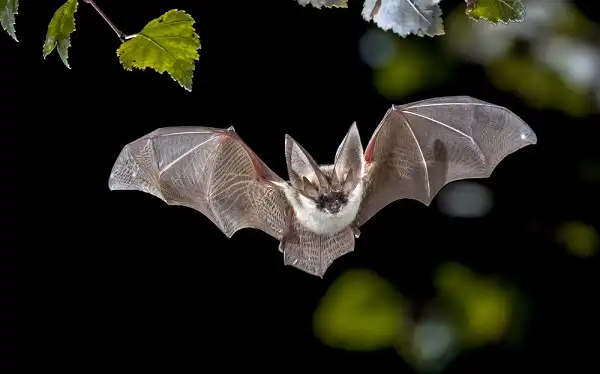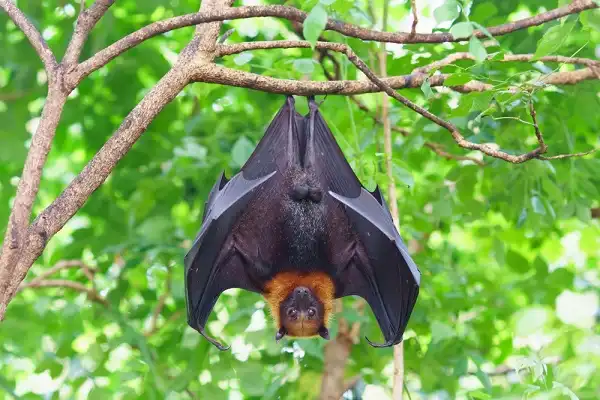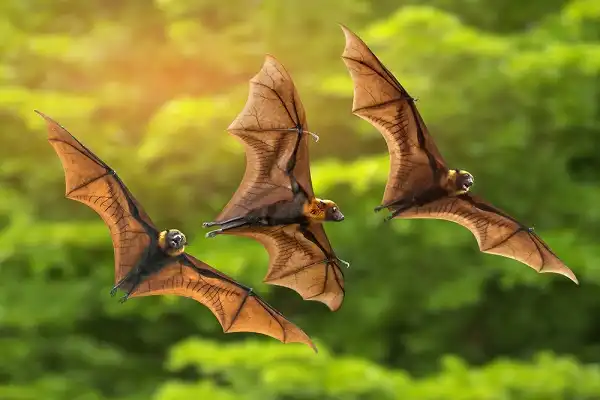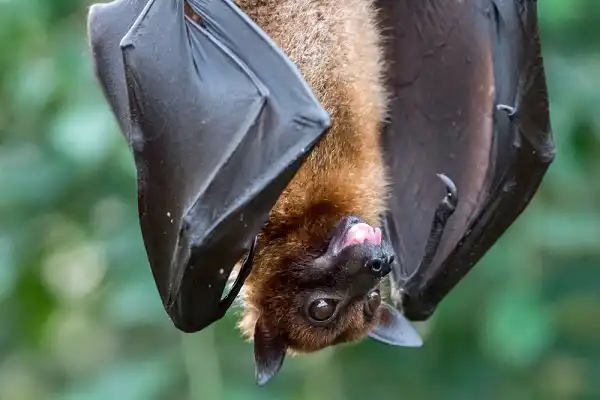Having a fear of bats is as common as having a fear of spiders, heights, and small spaces. But what many people don’t realize is that bats are actually fascinating creatures with many incredible abilities. From their powerful echolocation to their surprising social behavior, understanding the biology of bats can make us appreciate them in new ways. In this blog post, we’ll be diving into the science behind these flying mammals so that you can learn more about them and gain an appreciation for these misunderstood yet amazing animals!

Bat Description
Bats are arguably the most mysterious of all mammals. With their huge wingspan and ability to fly, it’s no surprise that bats have been feared and misunderstood for centuries. But when you look beyond the myths and superstitions, you’ll find a diverse group of animals with incredible abilities. For starters, bats come in a wide variety of shapes, sizes, and colors. There are over 1,400 species of bats worldwide. More than just physical traits separate bats from other mammals. They are the only mammal that can truly fly—achieving sustained flight by flapping wings like birds rather than gliding like other mammals such as flying squirrels. Bats also use echolocation to navigate in darkness or foggy conditions; they emit high-frequency sounds which then bounce off objects in the environment allowing them to map out their surroundings! Aside from their remarkable navigational skills, many bat species show outstanding social behavior.
Bat Habitat
Bats can be found living in a variety of habitats all around the world, from tropical rainforests to arid deserts. They roost in caves, trees, under bridges, and even inside man-made structures such as buildings. Bats are incredibly adaptive mammals and have been able to thrive even in human-altered landscapes. Each species of bat has unique habitat preferences; some prefer to live in tropical climates with plenty of vegetation and fruit trees while others opt for arid desert regions with less competition from other animals. Bats also prefer to roost in cavities or crevices which provide protection from predators and harsh weather conditions. One example is the Mexican free-tailed bat which often creates huge colonies inside Texas’ Carlsbad Caverns National Park—a cavern system that stretches over 120 miles underground! Bats also provide vital services to their habitats by controlling insects, pollinating plants, and dispersing seeds through their droppings. The guano they produce is particularly important since it helps fertilize the soil and thus increases its productivity.
Bat Diet
Bats are voracious eaters and feed on a wide variety of food sources depending on the species. Most commonly, bats consume insects although some also specialize in eating fruit or even small animals such as fish and birds. Insect-eating bats hunt at night using echolocation to detect their prey. They snatch up bugs with their sharp claws and often swallow them whole while flying! Bats can catch hundreds of insects in just one night and have been known to consume up to half their body weight in a single feeding! Fruit-eating bats have an easier time filling their bellies; they simply pluck ripe fruit from trees and snack away. These types of bats are important seed dispersers in their habitats, as they spread the seeds of plants throughout the environment. Additionally, some bats feed on small vertebrates such as frogs, fish, and even birds! These species tend to be larger than insect-eating bats with bigger mouths and sharp teeth which allow them to catch and consume their prey more efficiently.

Bat Size
The size of bats varies greatly between species. Some are as small as a bumblebee weighing in at just under 0.2 grams while others can reach up to 1 kilogram! Generally, insect-eating bats tend to be smaller than their fruit or vertebrate-eating counterparts as they need less body mass to catch and consume bugs efficiently. In addition, the wingspan of different bat species also differs; some have wingspans reaching up to 1.5 meters while others may only span around 10 cm! This is due largely in part to the type of food each species eats; those that feed on larger prey require bigger wings for more powerful flight. No matter the size, all bats play an important role in their habitats. From controlling insect populations to pollinating plants, these creatures are vital for maintaining balance within an environment! It is our responsibility to do what we can to protect these precious animals from extinction so that future generations can continue to benefit from their many services!
Bat Lifespan
The average lifespan of bats varies between species. Generally, insect-eating bats tend to live longer than those that eat other food sources like fruit or vertebrates as they require less energy expenditure to find and consume their prey. In general, most bat species can live up to 10 years in the wild although some have been known to reach up to 40 years! This is due largely in part to their ability to hibernate which helps them conserve energy during winter months when food is scarce.
Bat Behavior
The behavior of bats varies greatly between species but in general, most are highly social animals. For instance, some species form large colonies which can include thousands of individuals! These colonies will often share roosting sites and can be active during the day or at night depending on the species. Bats typically rely on echolocation to find their food as well as to navigate their surroundings; this is done by emitting calls that bounce off objects and then interpreting the returning echoes to locate them. Additionally, some bat species also use chemical signals such as pheromones to interact with each other or attract mates.

Bat Speed
Bats are some of the fastest flying animals in nature, able to reach speeds of up to 60 miles per hour! This impressive speed is mostly attributed to their wings which are adapted for efficient flight and maneuverability. Depending on the species, bats may have different wing shapes which can enable different levels of agility and velocity; for instance, nectar-feeding bats usually have shorter wings that allow them to make quick turns while fruit-eating bats tend to have longer wings that offer increased lift and stability. To maximize their speed, some bat species will also use wind currents or updrafts when they fly; this allows them to gain altitude without expending much energy. Additionally, many bats will maintain a constant cruising speed so as to not waste energy. Through their unique wing shapes and special flying techniques, bats have adapted for efficient flight which allows them to travel long distances in short periods of time. With your help, more people can learn about these amazing animals and take action toward preserving their natural habitats.
Bat Hunting
Bats are skilled hunters, able to capture their prey in darkness using echolocation. Depending on the species, bats can hunt a variety of different things such as insects, fish, small mammals, and birds. When hunting, some bat species may use specific techniques such as gleaning (or plucking their prey from surfaces) or hawking (or pursuing their prey through the air). Additionally, many bats will also pursue their prey in groups which increases the odds of them capturing something successfully. Bats are expert predators that rely on echolocation to hunt and capture their prey. By understanding and appreciating these animals’ skills at hunting we can do our part to ensure their survival for future generations!

Conclusion
Bats are fascinating animals that rely on echolocation and special adaptations to survive in their environment. By understanding and appreciating these creatures, we can do our part to ensure their survival for future generations! From bat speed and hunting capabilities to the importance of protecting them, this article has provided an overview of bats and why they are so important.
Frequently Asked Question


